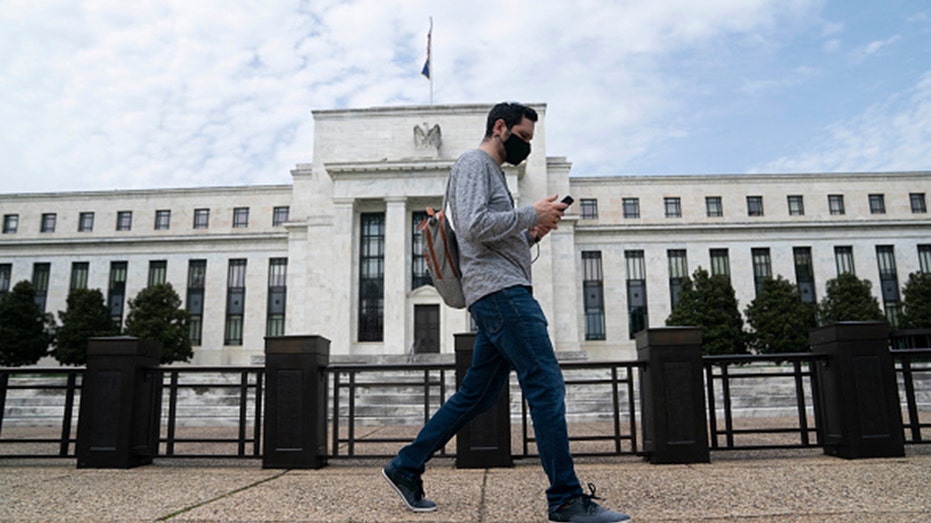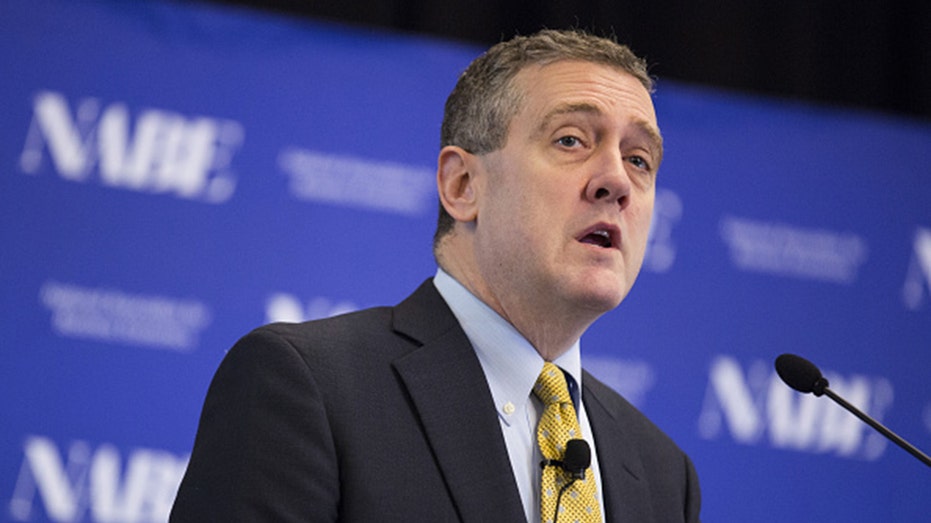Fed's Bullard backs March interest rate hike, citing 'unanticipated' inflation shock
Bullard: Fed policy has shifted to combat rising inflation
Fed a 'bigger risk' than inflation: Market expert
Independent Advisor Alliance CIO Chris Zaccarelli discusses his 2022 market outlook and sector picks.
St. Louis Federal Reserve President James Bullard said Thursday that he sees an initial interest rate increase happening as soon as March as the U.S. central bank seeks to quell the hottest inflation in nearly four decades.
Speaking during a meeting of the CFA Society St. Louis, Bullard – who is serving as a voting member of the Federal Open Market Committee this year – suggested that policymakers may immediately pivot to raising rates once the Fed concludes its massive bond-buying program in March.
"The FOMC could begin increasing the policy rate as early as the March meeting in order to be in a better position to control inflation," Bullard said. "Subsequent rate increases during 2022 could be pulled forward or pushed back depending on inflation developments."
The Fed president said that policy has shifted from keeping the economy afloat during the pandemic to combating inflation.
"There was a significant unanticipated inflation shock in the U.S. during 2021," he said. "With the real economy strong but inflation well above target, U.S. monetary policy has shifted to more directly combat inflation pressure."
FED DOUBLES TAPER RATE, EYES THREE INTEREST RATE HIKES IN 2022
His comments come one day after the Fed released unexpectedly hawkish minutes from its Dec. 14-15 policy-setting meeting, revealing that most officials agreed that surging inflation and a rapidly recovering labor market could warrant a faster-than-expected interest rate hike.

WASHINGTON, April 29, 2020.A man wearing a mask walks past the U.S. Federal Reserve building in Washington D.C., the United States, on April 29, 2020. (Getty)
"Participants generally noted that, given their individual outlooks for the economy, the labor market and inflation, it may become warranted to increase the federal funds rate sooner or at a faster pace than participants had earlier anticipated," the minutes, released Wednesday, said. "Some participants also noted that it could be appropriate to begin to reduce the size of the Federal Reserve’s balance sheet relatively soon after beginning to raise the federal funds rate."
At the conclusion of their two-day meeting last month, policymakers announced they would double the tapering of a massive bond-buying program, putting the Fed on pace to end the program by March. In making the decision, they cited improvements in the labor market and the hottest inflation in nearly 40 years.
Although officials held rates near zero during the meeting, they were unanimous in forecasting at least one rate hike next year. That marked a considerable shift from September, when half of the central bankers believed interest rate increases were not warranted until at least 2023.
Officials now project rates to stand at 0.9% at the end of 2022, 1.6% at the end of 2023 and 2.1% at the end of 2024.

James Bullard, president and chief executive officer at the Federal Reserve Bank of St. Louis, speaks during the National Association of Business Economics' (NABE) Economic Policy Conference in Washington, D.C., U.S. on Monday, Feb. 26, 2018. (Joshua Roberts/Bloomberg via Getty Images / Getty Images)
Traders expect the Fed to begin raising rates in March, according to the CME's FedWatch tool, which could mean the balance reduction begins in early summer. Policymakers said the appropriate timing of reducing the balance sheet would likely be "closer to that of policy rate liftoff in the committee’s previous experience," the minutes said.
Meeting minutes suggested that once the process begins, the runoff of the $8.8 trillion balance sheet could be "faster than it was during the previous normalization episode" in 2017. Some participants also "judged that a significant amount of balance sheet shrinkage could be appropriate over the normalization process."
CLICK HERE TO READ MORE ON FOX BUSINESS
For months, the Fed has been wrestling with its dual mandate of stable prices and full employment: The nation's jobless rate plunged to 4.2% in November, but there are still about 6.9 million out-of-work Americans. At the same time, consumer prices in November soared 6.8% from a year ago, the fastest pace since June 1982.





















